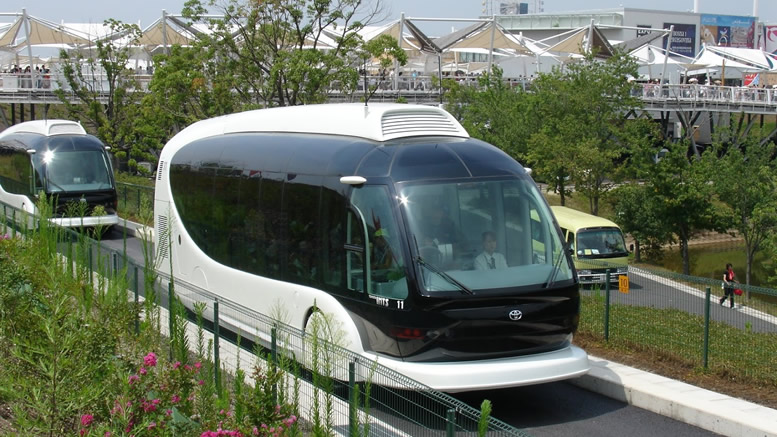 The Japan Association for the 2005 World Exposition and Toyota Motor Corporation have agreed on a joint project to provide on-site transportation for the 2005 World Exposition, Aichi, Japan using advanced transportation technologies.
The Japan Association for the 2005 World Exposition and Toyota Motor Corporation have agreed on a joint project to provide on-site transportation for the 2005 World Exposition, Aichi, Japan using advanced transportation technologies.
The movement of visitors within EXPO 2005’s Nagakute area will be facilitated by TMC’s Intelligent Multimode Transit System (IMTS), which features non-mechanically linked vehicles moving in platoon formation.
As the aim of EXPO 2005, held from March 25 to September 25, 2005, is to propose a new global social model for the twenty-first century, the Association had been studying futuristic, eco-friendly transit systems that would be safe, comfortable, and pleasant to ride. TMC, meanwhile, was keen to offer people firsthand experience of IMTS as a next-generation urban transit system and of the efficiency and potential of fuel cell vehicles.
Each IMTS unit will feature a “Z-CAPSULE” design that gently embraces passengers, projecting an image for a new form of public mobility. Its round and gentle glass cabin, with its aesthetically pleasing lines, provides the occupants with a panoramic view. The IMTS feature a Dual-mode operation and can be operated both unmanned automatic operation on a dedicated road or manned manual operation on on-site ordinary roads.
On the dedicated road, three units will run in a platoon; the last unit will automatically separate to travel on an ordinary road when needed and will then automatically re-join the formation when it returns to the dedicated road. Each unit will feature low floors and will stop at station platforms at a point in which floor height is equal to platform height.
IMTS vehicles are navigated and controlled by magnetic markers imbedded in the middle of their dedicated roads. A thorough fail-safe system is adopted, featuring automatic speed regulation and braking functions assured by inter-vehicle communication, ground signals and other means.
The IMTS bus operate in a platoon of 3 cars, in file formation. The cars adjust the speed of their travel (to a maximum of 30kmh) in accordance with their timetabled stop at the next station, this means no more late buses. When the platoon arrives at the station each vehicle is controlled to stop exactly at set points along the station platform.
